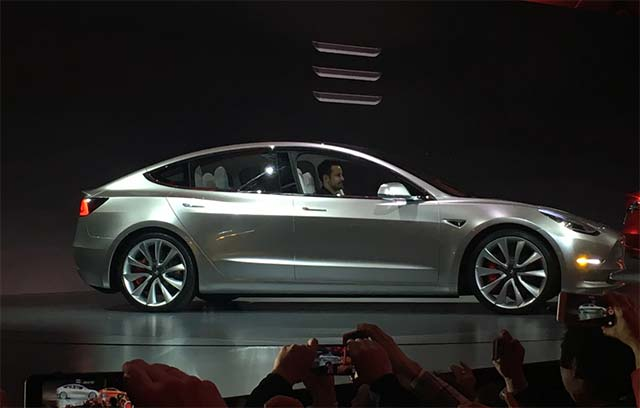In a world increasingly driven by the quest for sustainable living, Tesla’s innovative approach to electric vehicle (EV) technology is making waves. The introduction of the Tesla 4680 battery cells marks a pivotal moment in the evolution of EVs, promising to reshape the landscape of electric mobility. These groundbreaking battery cells are not just about longer range and faster charging; they represent a leap forward in energy efficiency and production sustainability. In this article, we’ll delve into how Tesla’s 4680 battery technology is revolutionizing electric vehicles and what this means for the future of transportation.
The Science Behind Tesla’s 4680 Battery Cells
What Makes 4680 Battery Cells Unique?
The 4680 battery cells are named for their dimensions—46 millimeters in diameter and 80 millimeters in length. This new form factor is the cornerstone of Tesla’s strategy to enhance energy capacity while reducing costs. Here’s how they stand out:
- Higher Energy Density: The larger size allows for more active material, increasing energy storage.
- Faster Charging: Improved thermal management enables quicker heat dissipation, facilitating faster charging times.
- Lower Production Costs: A streamlined manufacturing process reduces costs, making EVs more affordable.
Advanced Manufacturing Techniques
Tesla employs innovative manufacturing techniques, such as dry electrode coating, to create these cells. This process not only reduces the environmental impact but also enhances the performance and longevity of the batteries. According to a Wired report, this technique cuts down on water usage and harmful solvent emissions, aligning with Tesla’s commitment to sustainability.
Impact on Electric Vehicle Performance
Enhanced Range and Efficiency
One of the most talked-about benefits of the 4680 cells is their impact on vehicle range. With approximately 16% more range than previous models, Tesla vehicles equipped with these cells can travel further on a single charge, reducing range anxiety—a common concern among EV users.
- Range Increase: The Model S Plaid, for instance, can achieve over 390 miles on a single charge.
- Energy Efficiency: Greater energy density translates to more miles per kilowatt-hour.
Improved Vehicle Dynamics
The structural battery pack design, where the 4680 cells are integrated into the vehicle’s chassis, enhances overall vehicle dynamics:
- Weight Reduction: Eliminates the need for separate structural components, leading to lighter vehicles.
- Increased Safety: The battery pack adds rigidity to the vehicle, improving crash safety.
Tesla’s Strategy and Market Impact
Competitive Edge in the EV Market
Tesla’s 4680 cells give the company a significant competitive advantage. As InsideEVs highlights, these batteries allow Tesla to maintain its lead in the EV market by offering superior performance and cost-efficiency compared to competitors like Rivian and Lucid Motors.
Environmental and Economic Benefits
- Sustainability: The use of less cobalt and more nickel in 4680 cells is a step towards more sustainable battery production.
- Economic Impact: Lower production costs mean Tesla can offer more competitively priced vehicles, broadening their market appeal.
Practical Tips for EV Enthusiasts
How to Charge Tesla Vehicles with 4680 Cells
Charging a Tesla equipped with 4680 cells is similar to charging any other Tesla, but here are some tips to optimize your experience:
- Use Tesla Superchargers: These provide the fastest charging times, with 15 minutes typically adding around 200 miles of range.
- Home Charging: Installing a home charger can provide convenience and cost savings over time.
- Monitor Battery Health: Regular software updates from Tesla include battery management improvements.
Where to Buy and What to Compare
If you’re considering a Tesla with 4680 cells, here’s what to keep in mind:
- Compare Models: Evaluate the range, price, and features of different Tesla models to find the one that best suits your needs.
- Look for Incentives: Check for government incentives and rebates that can reduce the overall cost of purchase.
- Future-Proofing: Investing in a model with 4680 cells ensures you have access to the latest technology and improvements.
Conclusion: The Future of Electric Mobility
Tesla’s 4680 battery cells are more than just a technological advancement; they represent a shift towards a more sustainable and efficient future for electric vehicles. By enhancing range, reducing costs, and improving vehicle performance, these batteries are setting new standards in the industry. As we look ahead, it’s clear that Tesla’s innovation will continue to drive the adoption of electric vehicles, paving the way for a cleaner, greener future.
Are you ready to make the switch to an electric vehicle and experience the future of transportation firsthand? Let us know your thoughts in the comments below. And stay tuned as we continue to explore the ever-evolving world of sustainable mobility.

